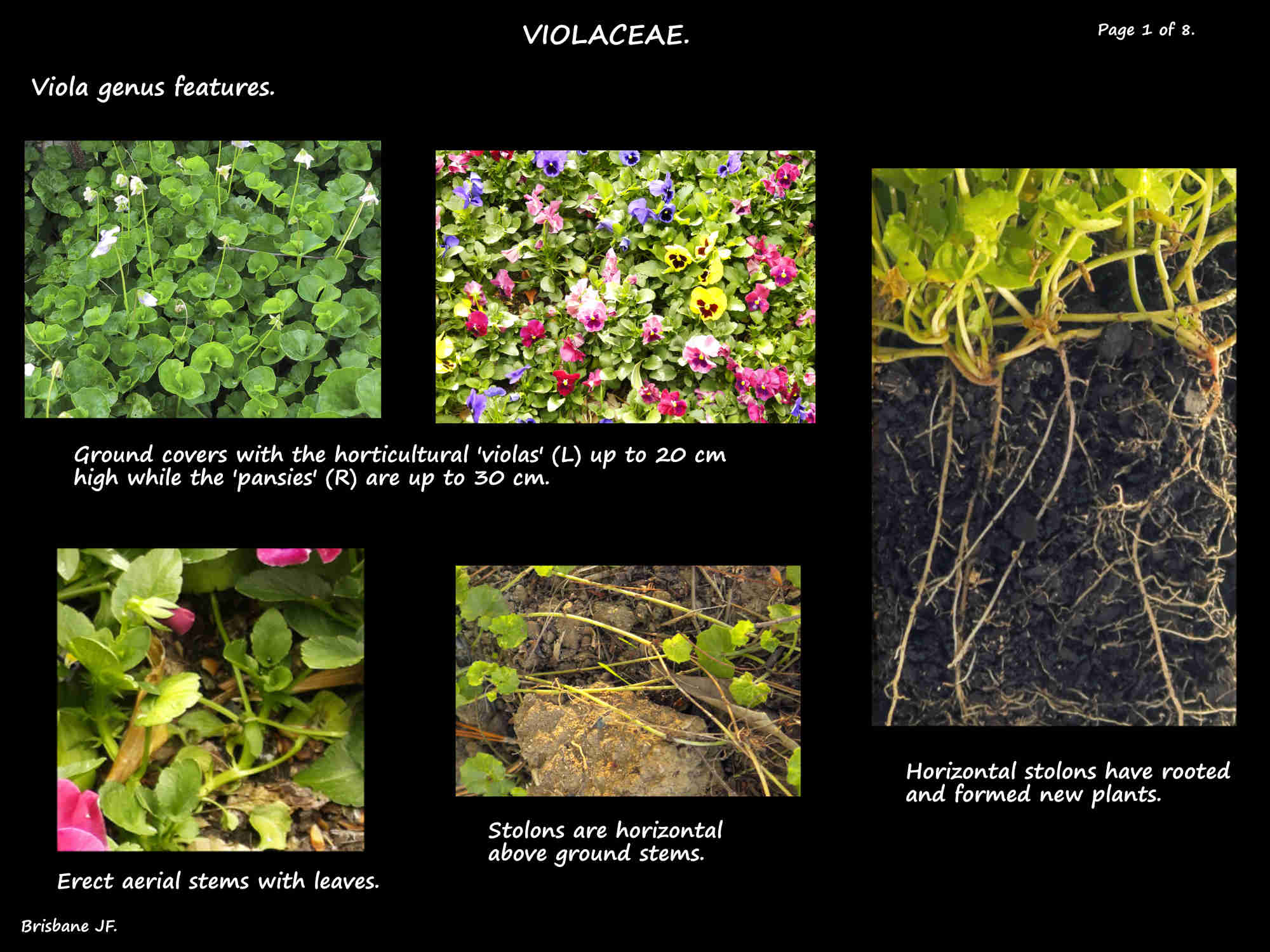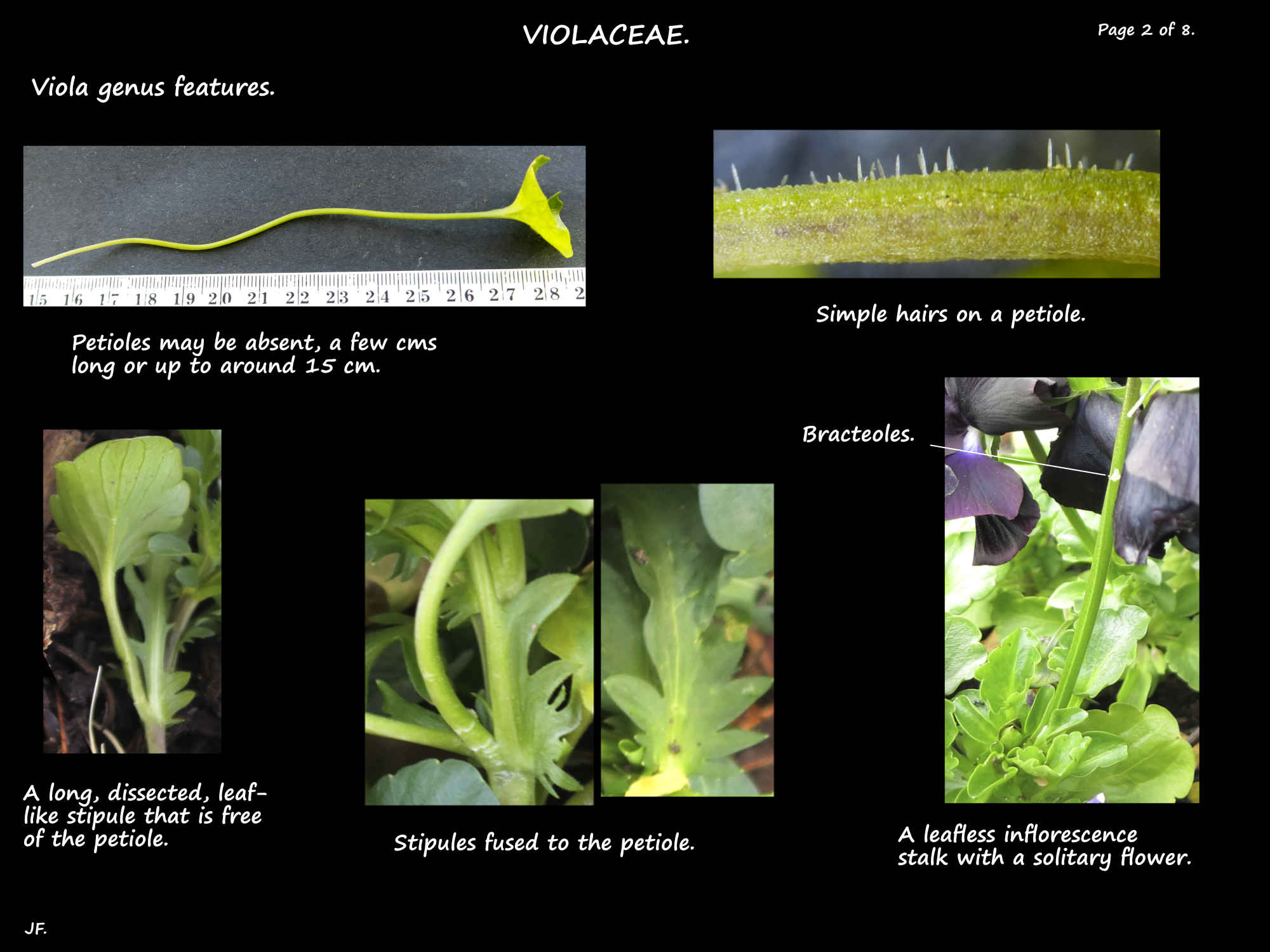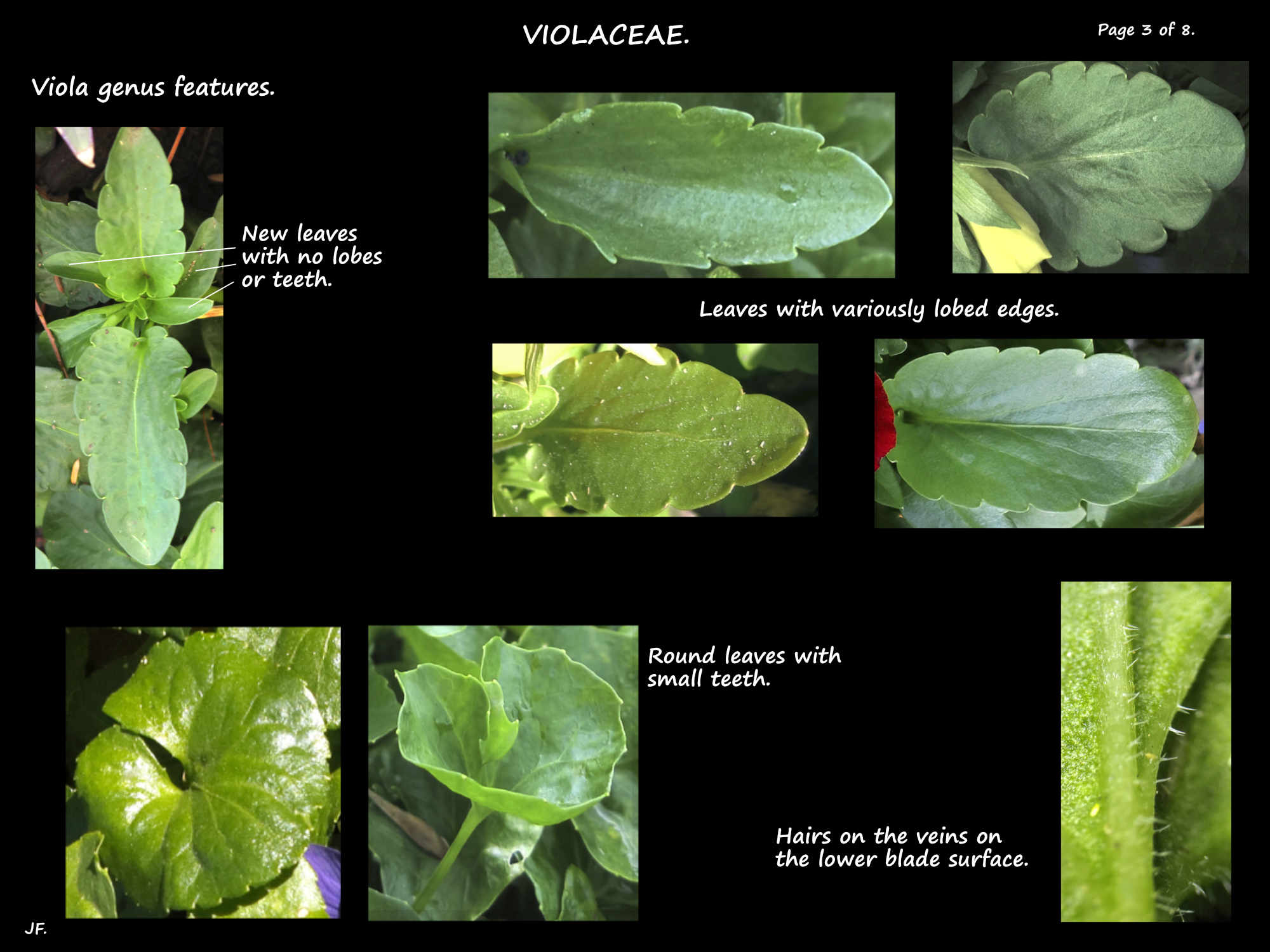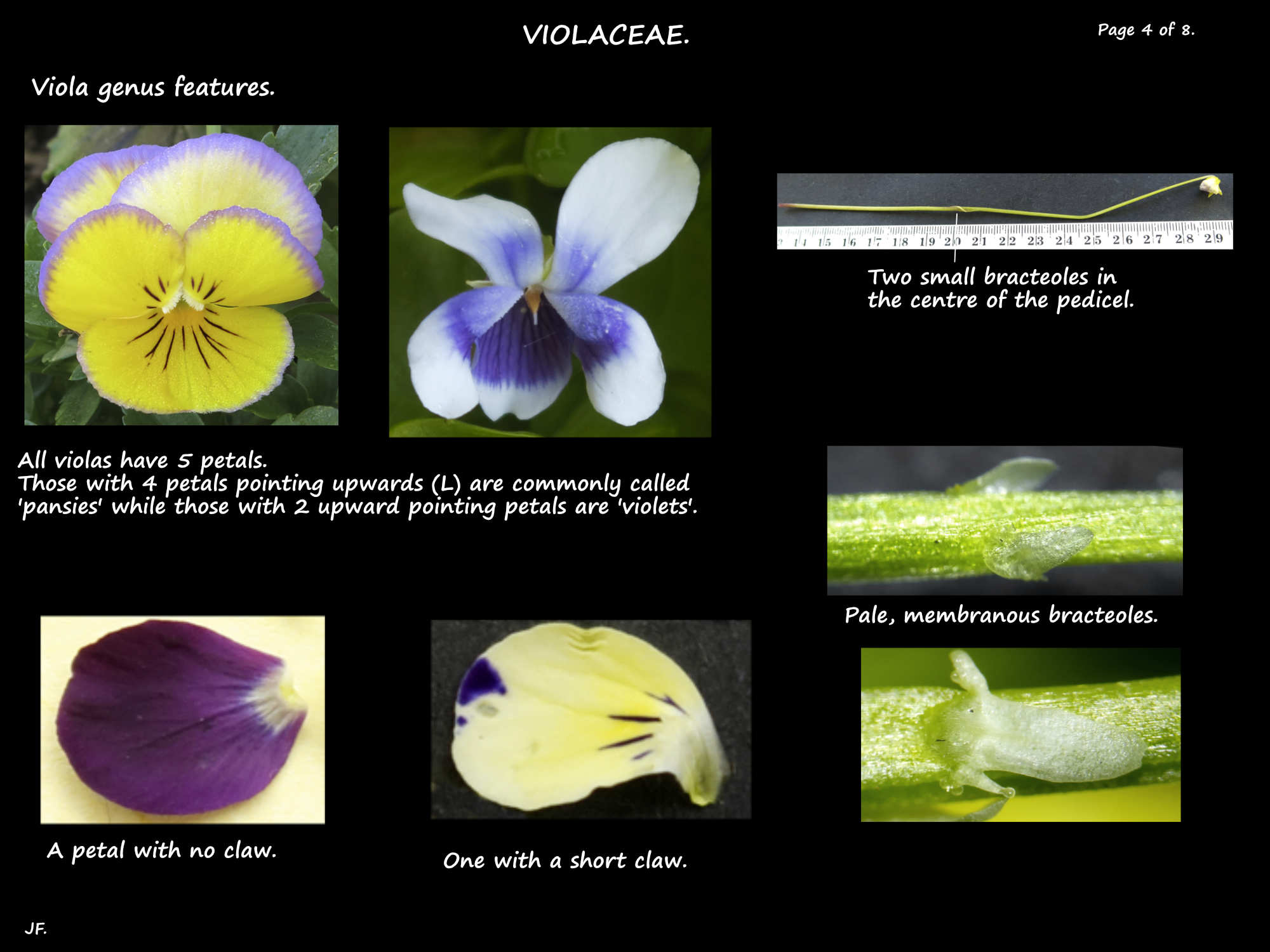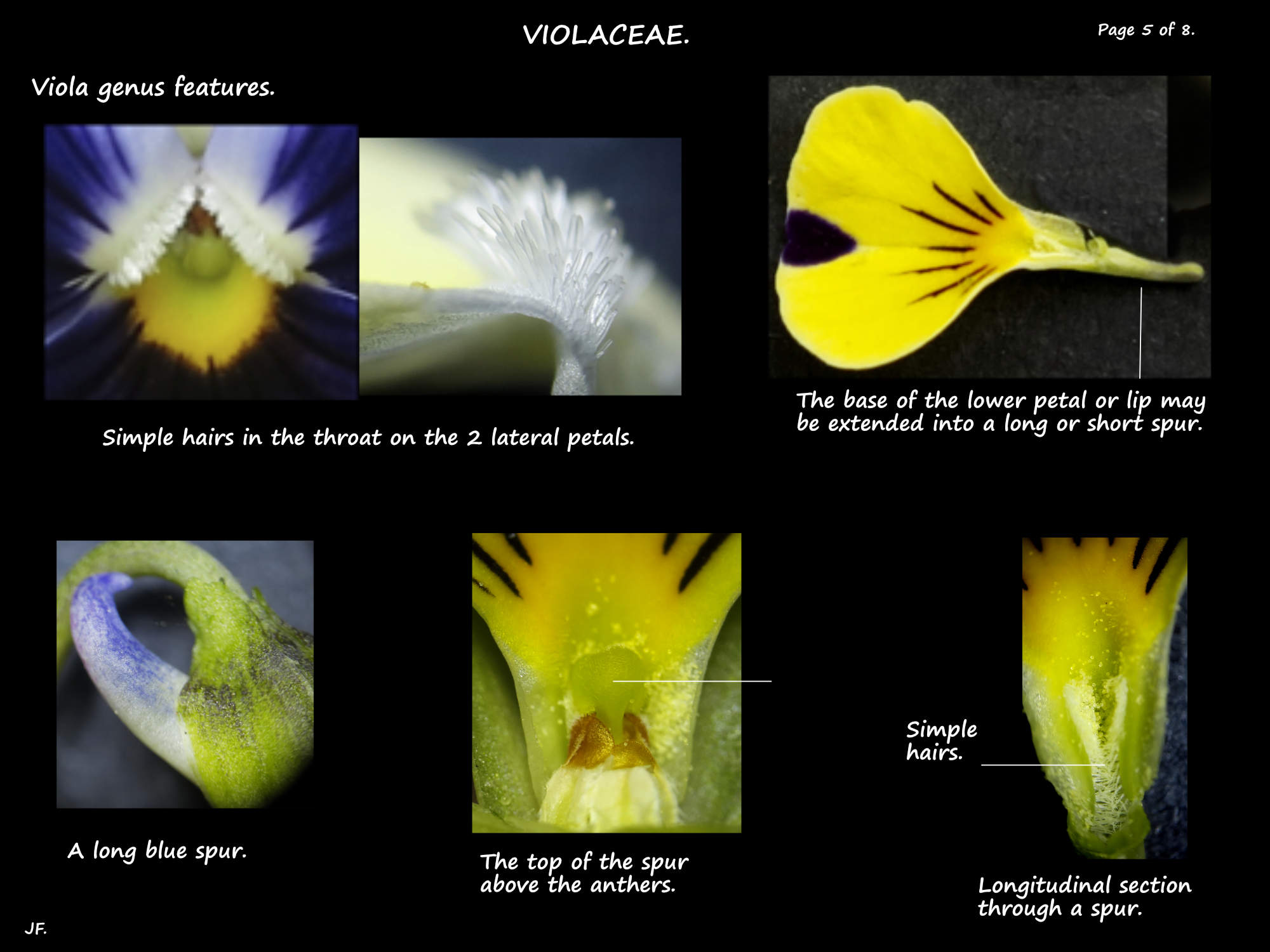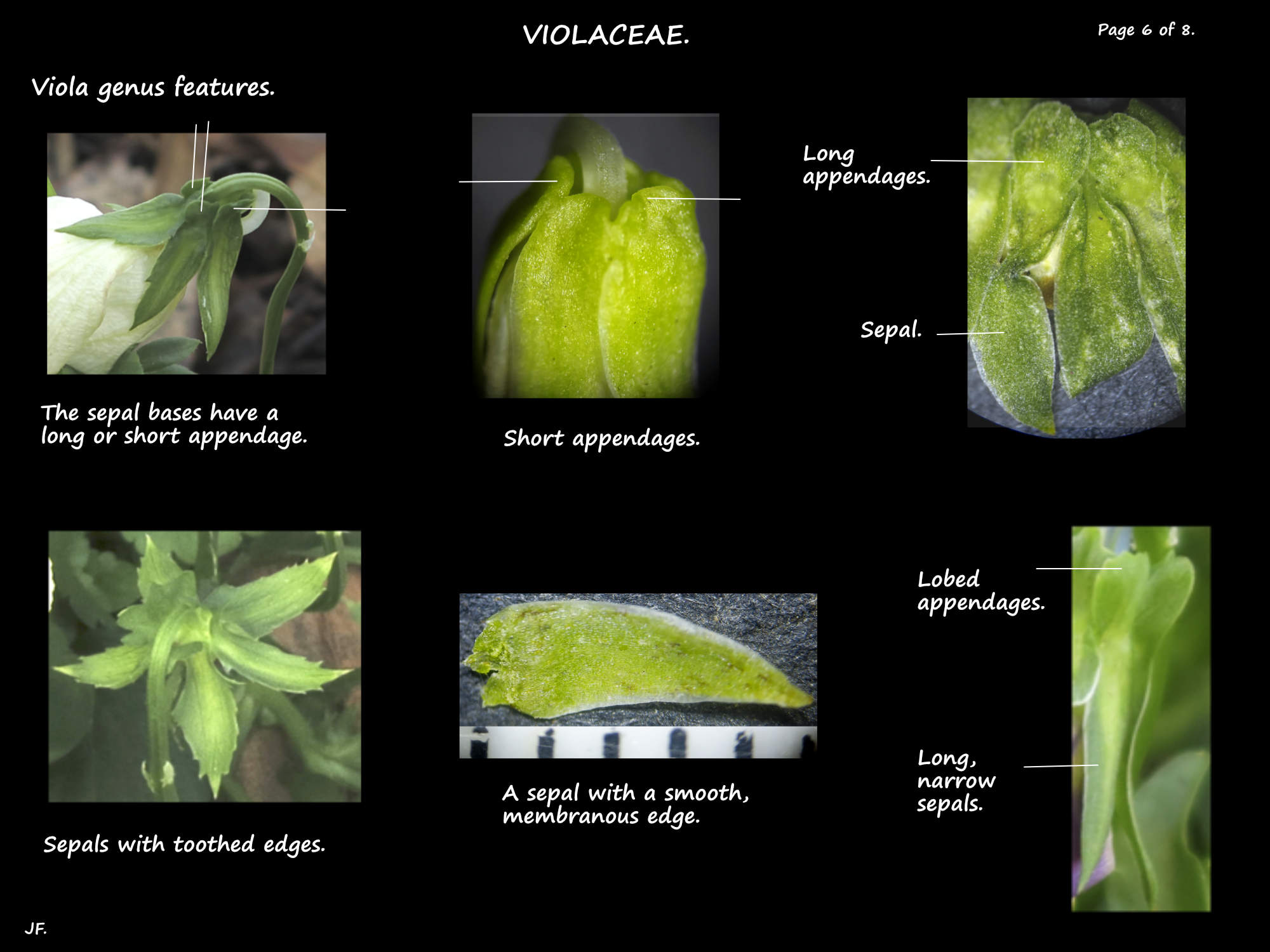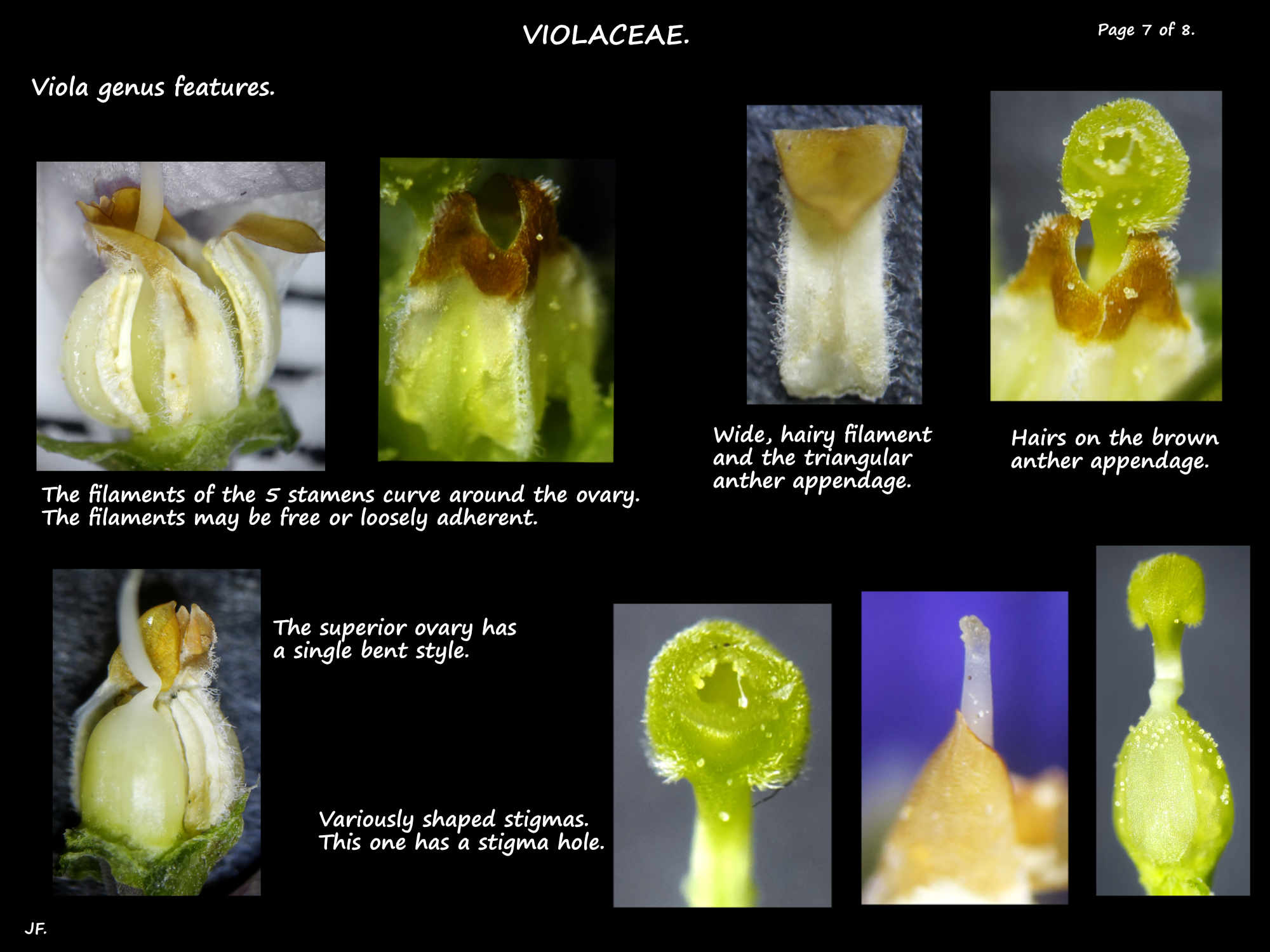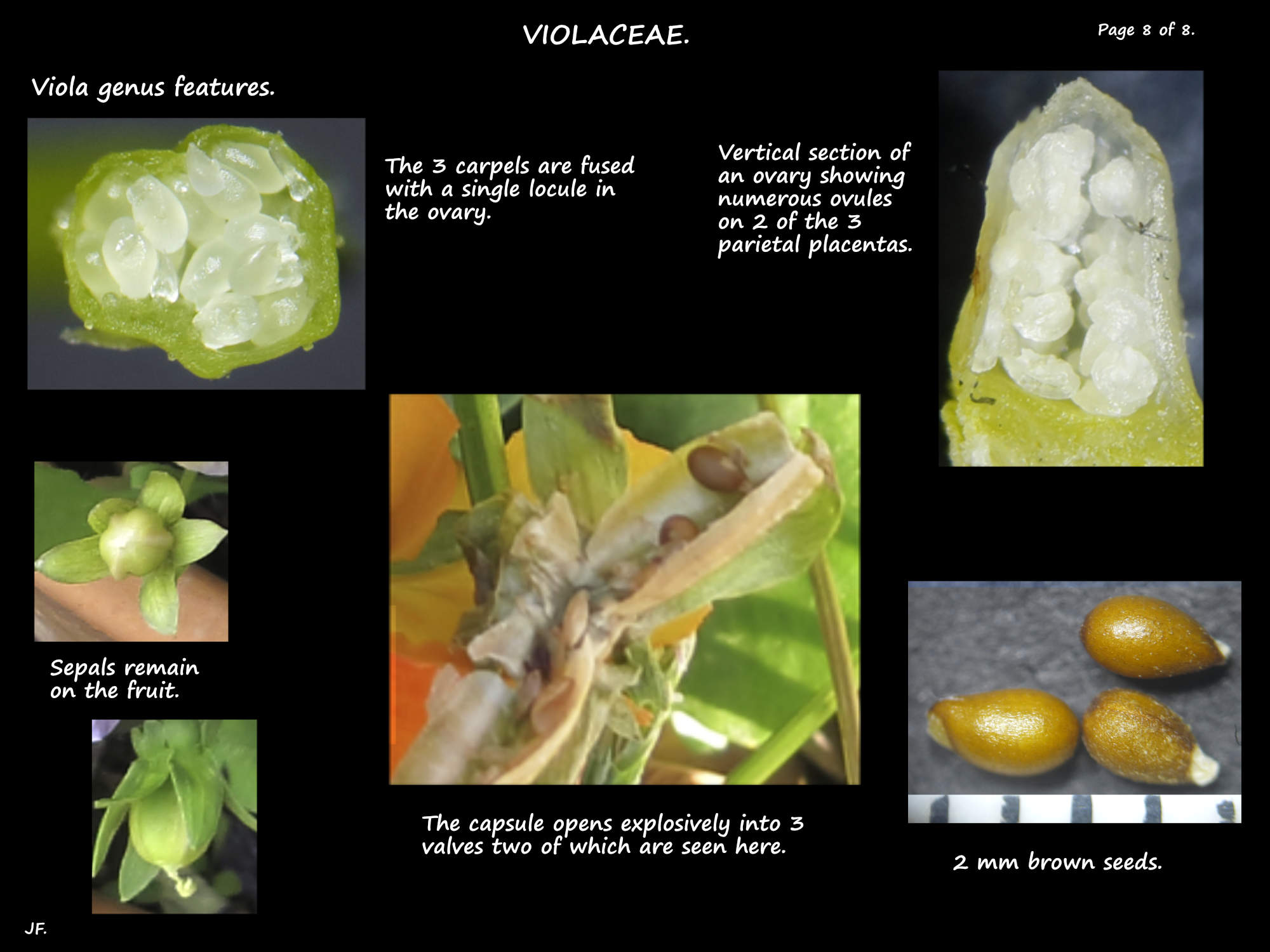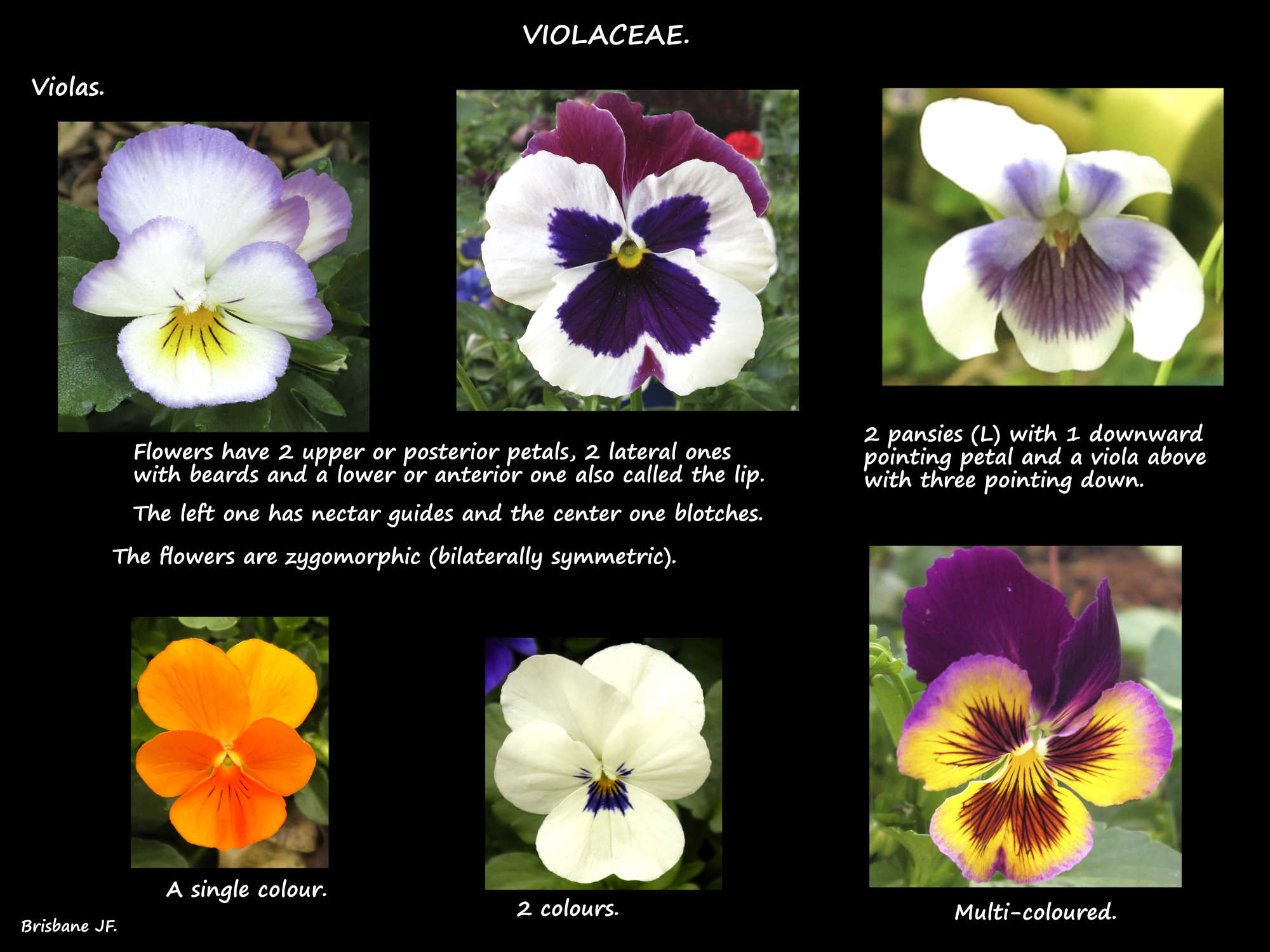Viola genus.
In family Violaceae the Viola genus is the largest with around 500 (400 to 600) species.
Currently divided into 17 sections their classification is still not resolved.
There are approx. 17 species in Australia some native and some naturalised.
Species native to Australia include Viola banksii, Viola betonicifolia and Viola hederacea.
Almost all are annual or perennial herbs with a few shrubs up to 1.5 m high.
They can have taproots or rhizomes.
There may be no above ground leaf-bearing stem with the leaves arising from the rhizome.
Others have up to 10 or so short aerial stems that may be erect, prostrate or prostrate with the tip erect.
There are often stolons which are long, above ground, horizontal stems that root at the nodes producing a new plant.
Hairs may be present on various parts.
Leaves, usually on long petioles form a basal rosette or alternate along an aerial stem.
The persistent stipules, up to 4 cm long may be leaf-like or brown and membranous.
They may be free of, or attached to the petiole and the edges may be lobed or toothed.
The leaf blades are typically heart or kidney-shaped but may be round, ovate, linear or lanceolate.
The edge may be smooth, toothed or scalloped to various degrees.
Inflorescences are almost always a single axillary flower with a few species having small clusters.
In plants with no aerial stem the flower is on a long leafless stalk arising from the rhizome or stolon.
There is always a pair of small bracteoles near the middle of the pedicel.
The nodding flowers are markedly bilaterally symmetric (zygomorphic).
They are bisexual but most species also have flowers produced later in the season that never
open and self pollinate resulting in many fertile seeds.
There are 5 equal or almost equal sepals whose edges may have tiny hairs.
They usually have a small to prominent basal appendage or auricle.
The sepals persist in the fruit and may continue to grow.
The 5 free, widely spreading, slightly overlapping petals have a narrow base.
There are 2 upper or posterior petals and 2 lateral ones that often have a beard at the base of the limb.
The lower or anterior petal is the lip and it is usually larger than the others.
Its shape varies from wedge-shaped to ovate or oblong and it usuallly has a notch.
It may have a beard and it usually has a large or small basal spur.
The single to multi-coloured petals are usually yellow, orange, white, purple or blue.
There are 5 stamens on short filaments.
The filaments and anthers may be free or slightly stuck to each other enclosing the ovary and style.
The anthers open inwards via longitudinal slits.
The connective tissue between the anther sacs forms an ovate to oblong appendage.
The filaments of the 2 lower or anterior stamens have a nectar containing appendage or spur that extends
into the spur of the lower petal.
The superior ovary, of 3 fused carpels, has one locule.
Each of the 3 parietal placentas has numerous ovules.
The single, usually bent style is often thicker near the top and it may have various appendages.
The stigma may be club-shaped, lobed or have a flattened top.
The fruit are loculicidal capsules of various shapes and they may have hairs or a mucro.
The 3 keeled valves open explosively.
The few to many ovoid or spherical seeds usually have a smooth surface.
They may have an aril or thickening near the point of attachment.
J.F.
